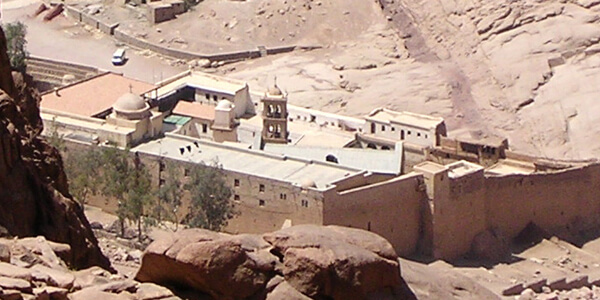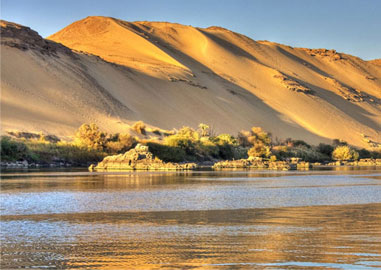
Historical-Religious-Geographical Importance of Mount Sinai
Posted By MariaLocation of Mount Sinai
Israel, its suburbs, the Middle East and the northern parts of the African continent are historically very significant with respect to the birth, development and the propagation of various revealed religions of the world, including Christianity, Judaism and Islam. One of such religiously most important places is the Mount Sinai, which is also known with a number of alternative names, like Mount Moses, Moses' Mountain, "Jabal Musa" or the Mount Horeb. The exact location of the biblical Mount Sinai is still controversial but the majority of the scholars consider it to be the same mountain as found on the Sinai Peninsula in Egypt. According to the religious accounts of Islam, Christianity and Judaism, it is this mountain which Moses (prophet of the Jews) climbed and talked to God, as well as received his Ten Commandments.
Geography & Physical Characteristics of Jabal Musa
The Mount Moses is a moderately high mountain that goes as high as 2,285 meter above the sea level and is located in the proximity of the city of Saint Catherine in the Sinai region of the Peninsula. The nearby Mount Catherine is the highest peak in Egypt with the maximum elevation of 2,629 meter, whereas, there is a range of mountains that surround the Jabal Musa from all sides. From the geological point of view, the nature of various composing rocks leads to the assumption that each of the constituent rocks originated from the different depths. Concerning ascent to its summit, there are usually two routes, where the first one is relatively longer and shallower, and the second one is the steeper and more direct route. If you opt for the longer route, it will take about two and a half hour to reach the top, whereas the shorter and steeper way consists of the 3,750 "steps of penitence".
Religious Significance of Mount Horeb
There are repeated references to the biblical Mount Sinai in the religious scriptures of the Judaism, Christianity and Islam, including the Exodus, the Torah and the Quran. It is considered to be one of most sacred and important places in the Abrahamic religions. As per the Bedouin tradition of the desert-dwelling Arabian ethnic groups, it was the place where God revealed his divine laws to the Israelites through his prophet Moses. The divine Ten Commandments were revealed to Moses when He was leading the Israelites towards the land of present-day Israel, after having rescued them from the furious army of Egyptians. Here it is also necessary to note that Moses gave deliverance to His followers from the Pharaoh's cruelty (Ramesses II) when the latter's forces were chasing them. At reaching the Red Sea, the prophet of God parted the sea through divine help and the Israelites crossed the water body safe and sound. But when the Egyptian army, riding the chariots, opted for the same way to chase Moses and His followers, they were drowned on the midway as the sea resumed its flow.
Mosque on the Summit
Constructed in the 12th century AD, a mosque is present on the summit of Mount Sinai that is still used by the Muslims for offering prayers. To the east of the mosque, on the peak, there is also a small chapel that was built in 1934 on the ruins of the 16th century church, but it is not open to the public. A rock enclosed by this chapel is regarded as the source of the "Tablets of Testimony" which were inscribed with the Ten Commandments, revealed on Moses, as it has been recorded in the Book of Exodus. According to Islamic tradition, Moses used to talk to Allah on the peak of Koh-e-Toor (Mount Sinai) whereupon He was bestowed with the title of "Kaleem-ullah", meaning the one "who talks to Allah". After saying all this, it is also necessary to remind you that, for some archeologists, the real Mount Sinai is the Jab Al Lawz in Madyan, Saudi Arabia.
World Information - Latest Articles

Most Natural Beautiful Country in the World
Written By IsaacQuantifying the beauty of a country for the sake of ranking is a tough task. It requires deep...

Facts About the Most Technologically Advanced Cities in the World
Posted By IsaacToday economic strength and advances in technology go hand in hand in determining...

Largest River in The World
Posted By IsacThousands of rivers flow through different parts of the earth and enrich it with precious...
